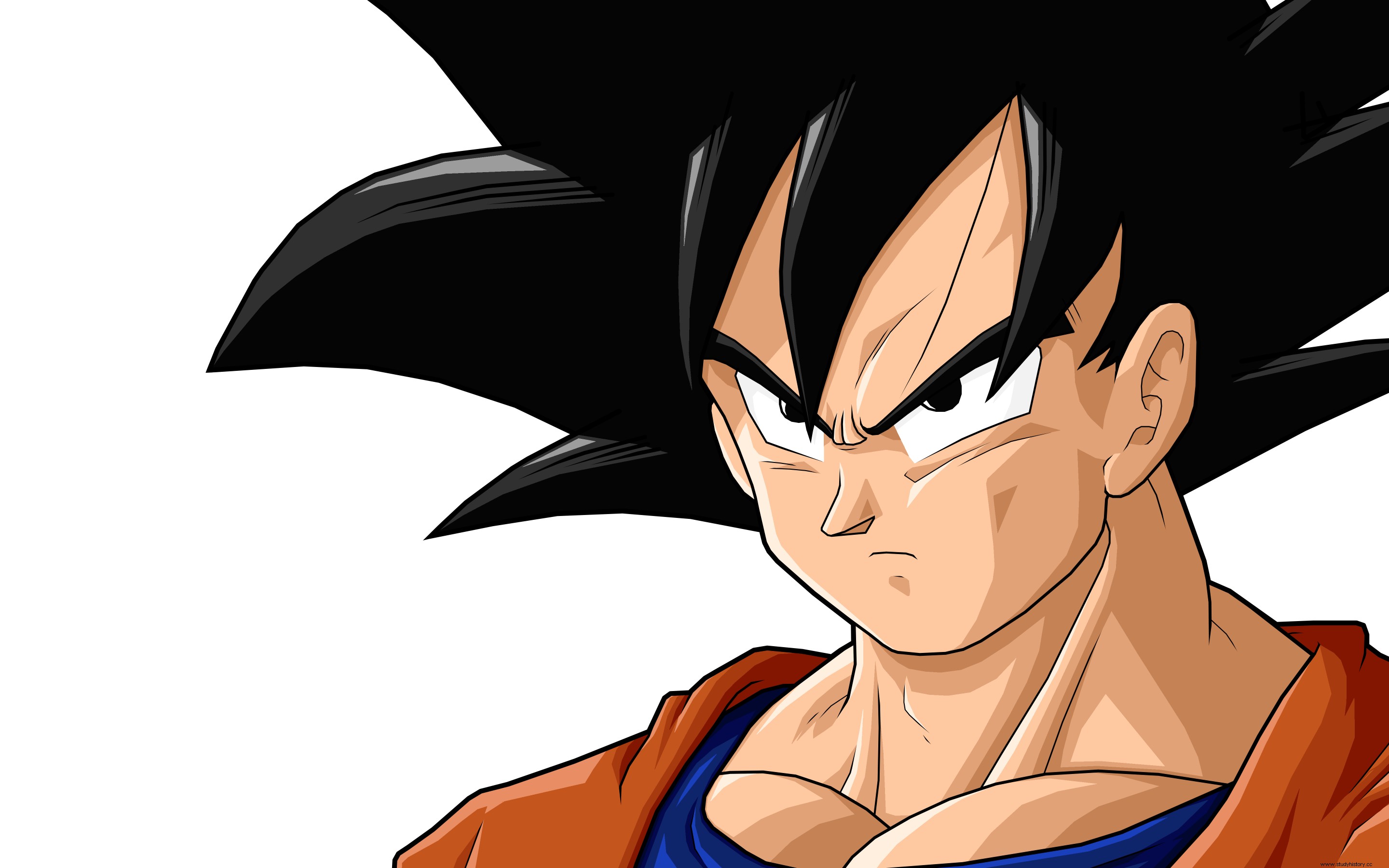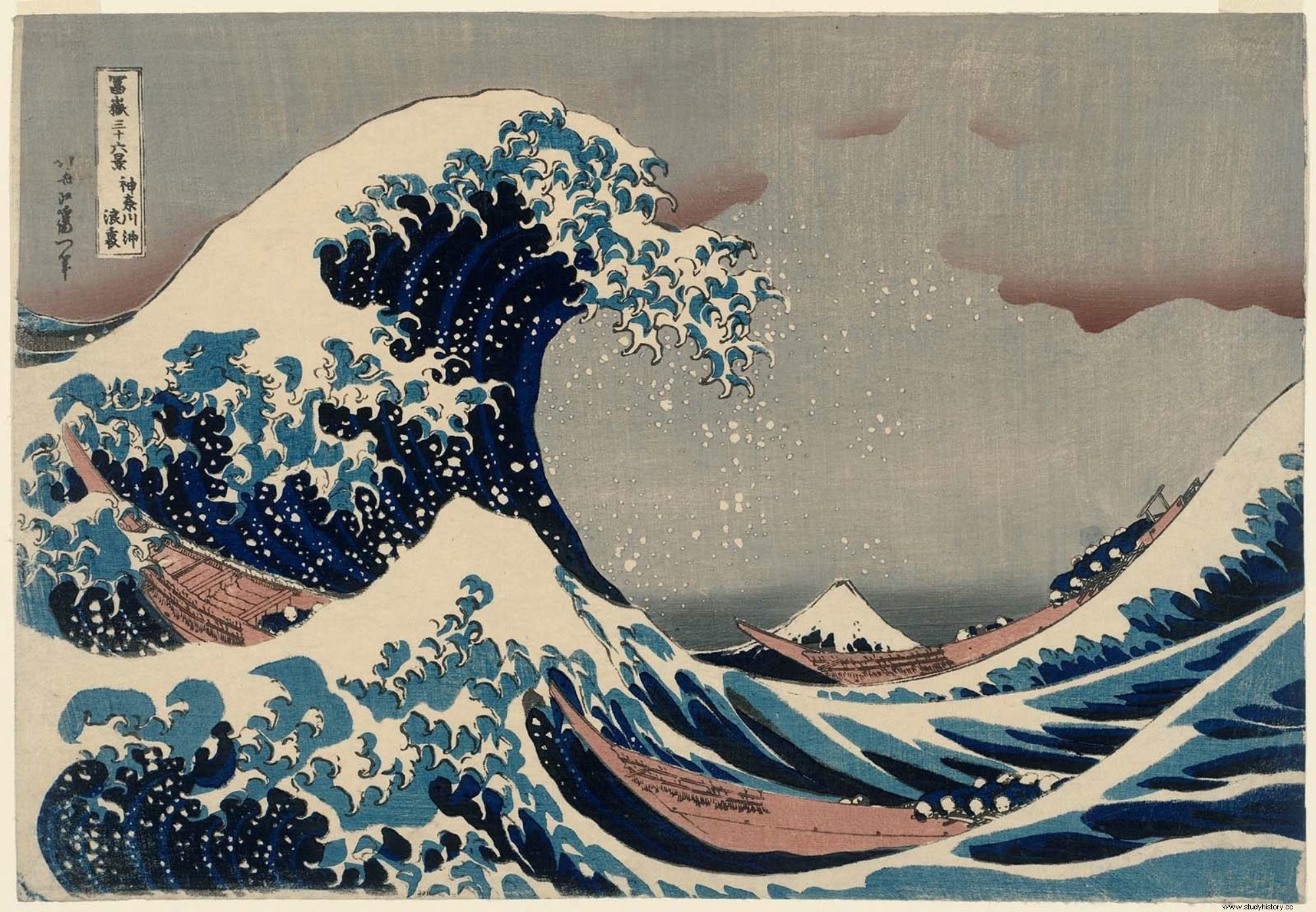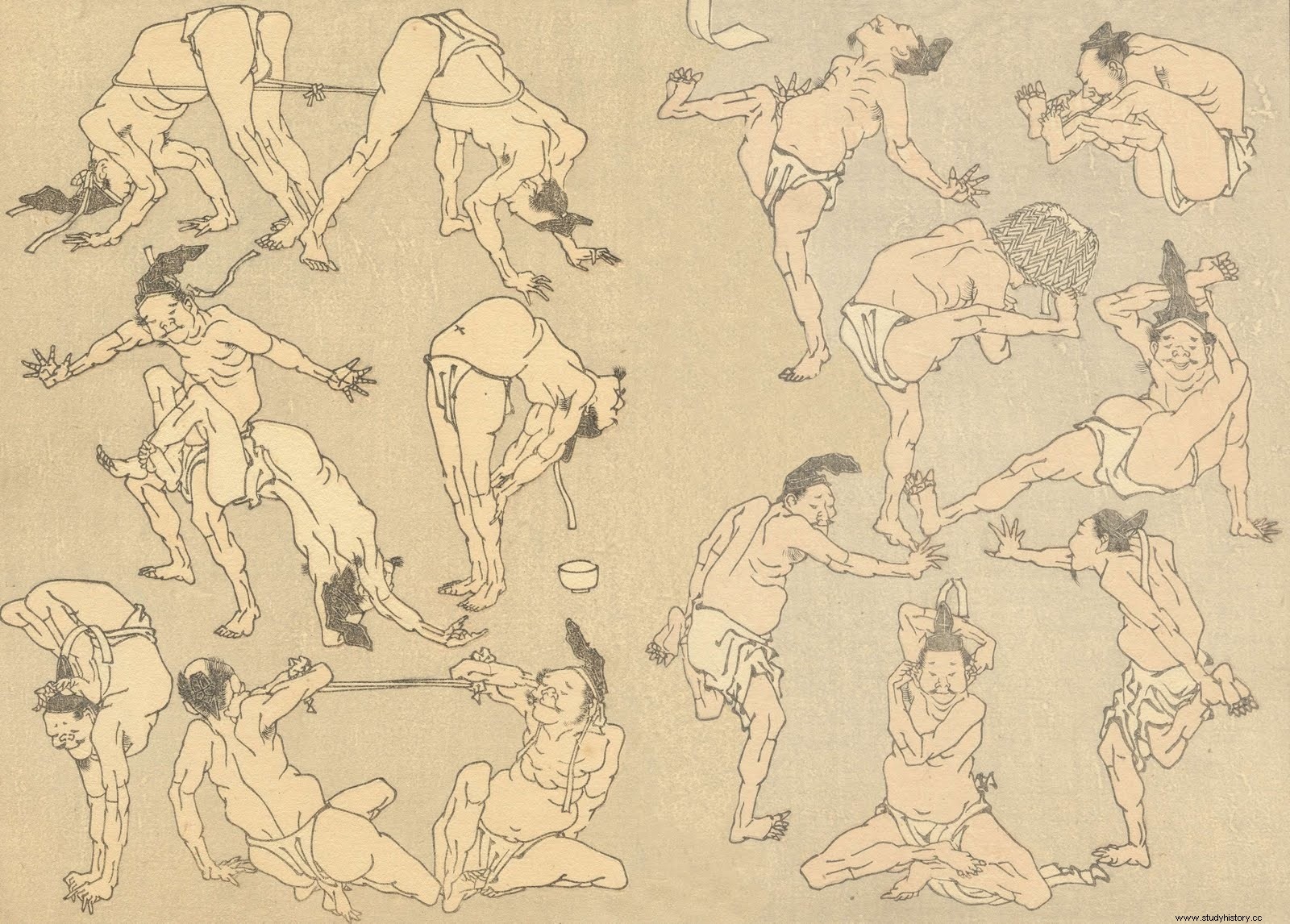If a comic fan is asked about manga, the first thing that probably comes to mind is the image of Son Goku or any other character with an impossible hairstyle, ethereal features and enormous round eyes. Who has not vibrated when they were little when they returned from school every afternoon with The Knights of the Zodiac , Dragon Ball , Champions or so many other unforgettable series? Japanese manga, with its distinctive aesthetics and dynamic narrative style, has become something recognizable and familiar to us. But what not many know is that the «manga «, a term that the Japanese use to denominate what in traditional Spanish we call «comic book "It's quite old. Its origins date back to no less than the feudal era, when samurai still walked the streets with sabers at their belts and the Tokugawa shoguns ruled the country with an iron fist.

Today, the word "manga" is synonymous with Japanese-style comics and animation all over the world. But, how has it come to give its name to comics and, by extension, to the famous cartoons? Without getting too involved in flour, since it is not a plan to bore the respectable with the ins and outs of Japanese grammar, we will say that the word in question is made up of two ideograms, 漫 and 画 . The first is "man » (carefree, casual) and the second “ga » (image or drawing), which when used together would be translated by something similar to «random sketches » or «light art «. So far the etymological explanation of the term.
The word itself has been used since the end of the 18th century, always associated with rather humorous pictorial representations, but the first to really popularize its use was Katsushika Hokusai , one of the greatest artists that Japan has given to the world. Born in Edo (present-day Tokyo) into a family of craftsmen around 1760, Hokusai was already going through life with a brush in his hand before he could remember. Those were the golden years of Tokugawa Japan, with the vibrant culture of the geishas and the kabuki theater in full bloom. The times of the floating world, of cherry blossoms and poems washed down with sake in the light of the full moon. ukiyoe style engravings , which reflected that romantic and deliciously decadent world, were the latest fashion, and Hokusai was to be the brightest star in the constellation of painters that would emerge around this new urban and hedonistic culture.

Wave of Kanagawa (Hokusai)
Chameleon-like artist and absolute master of the brush, he was capable of encompassing the most diverse styles and changing registers as he pleased:landscapes, still lifes, comic strips, portraits, erotic scenes... No genre resisted him; he cultivated them all and in all of them he was the best. During his 89 years of life, this crazy old man of drawing, as he defined himself, lived by and for painting. Over time, his genius even transcended the borders of the Japanese archipelago and came to have a decisive influence on the Monets, Renoirs and other European Impressionists of the 19th century. It is no exaggeration to say that Hokusai's strokes changed the history of art in the East and in the West. In fact, Hokusai is the author of many of the prints that we usually associate with Japanese art, such as his series of engravings of Mount Fuji or the famous (and not suitable for minors) «Dream of the fisherman's wife «. Probably, anyone who reads these lines will have seen one of his works, even without knowing it.

Dream of the fisherman's wife
But his magnum opus is precisely the Manga . More specifically, the 15 volumes of the "Hokusai Manga «, which cover nearly 4,000 pages full of illustrations, sketches and prints of the most diverse facets of Japan at the time. Landscapes, buildings, portraits, caricatures... everything has a place in Hokusai's Manga. The idea was not so much to make a compendium of his art as to offer reference material to all those who wanted to take their first steps in the world of ukiyoe . This kind of drawing encyclopedia began to be published in 1814 and the master would never see it finished. The last deliveries would not leave the printing press until 1878, posthumously. According to the editor in the preface of the first volume:
We decided to collect the drawings in book form. When we asked Hokusai what title he wanted to give the series, he simply said:"manga".
And this is how the work has remained for posterity:theHokusai Manga . For the artist himself, his crowning work was no more than a handful of sketches of no great importance, made by flying. In addition to being cool, the good man was somewhat humble.

But make no mistake, Hokusai did not coin the term "manga «. He limited himself to adopting a word already used in his time. Strictly speaking, he didn't invent what would later become Japanese comics either; That seed would be planted decades later, with the first European cartoon magazines that arrived in the country, and it would not fully germinate until after World War II. The Japanese manga that we know today was born, mainly, from the American audiovisual influence in the postwar years, and reached its definitive form around the 70s of the last century. But it was Hokusai who, with his art and his genius, popularized the concept of " manga ”, and made the word indelibly associated with drawings of a light and humorous nature. It seemed to everyone the most natural way to name comics when they began to develop a century later. However, we can also trace more or less direct antecedents of the current manga in the ukiyoe engravings. from Hokusai's time. The 17th and 18th centuries saw the birth of a vibrant consumer culture in Japan. The cities grew and the thriving bourgeoisie that inhabited them generated a vibrant market eager for entertainment. In response to this demand, arts such as theater, music and painting, focused on the popular classes, become objects of mass consumption and reach their maximum splendor.
With the development of the printing press, an entire industry of engraving made on woodblocks emerged, the ukiyoe , which the urbanites of the time consumed with relish. And as a derivative of these ukiyoe, which used to be more of a series of independent illustrations, illustrated books soon appeared that mixed dialogue with drawings. These early comics were called kibyoshi ("yellow-cover books"), comics for an adult audience that, like the manga of our days, covered the most varied themes. From surreal humor to period dramas, going through spicy and bawdy stories, everything had a place in its pages.
The combination of image and text to tell stories proved to be a wildly popular formula, and kibyoshi were selling like hot cakes. Although it wasn't all sake and roses, the ukiyoe industry it also had to weather its storms. The lurid nature of their contents meant that the authorities did not view these pamphlets very favorably, and the publishers had to deal with censorship campaigns and kidnapping of copies. Hokusai himself knew about this for a while, since he had his back and forth with the competent authority on account of some other subversive drawing. But no matter how careful the government was, there were always copies running from hand to hand, even if they were pirate prints made in clandestine workshops. Anything before leaving avid readers without their punctual fix of ukiyoe .
As we can see, the love of the Japanese for comics comes from afar. The next time we sit down to enjoy the adventures of Doraemon or Shin Chan , it would not hurt to remember that these characters are heirs to a centuries-old tradition, dating back to medieval Japan. A tradition, in a way, born from the brush of Hokusai, that little old man crazy about drawing, fond of scribbling on any piece of paper that came his way, and who is perhaps the most brilliant and universal artist in the Land of the Rising Sun.
Collaboration of R. Ibarzabal
Sources:Manga, the Pre-History of Japanese comics -VV.AA.; A History of Manga – Matt Thorn
